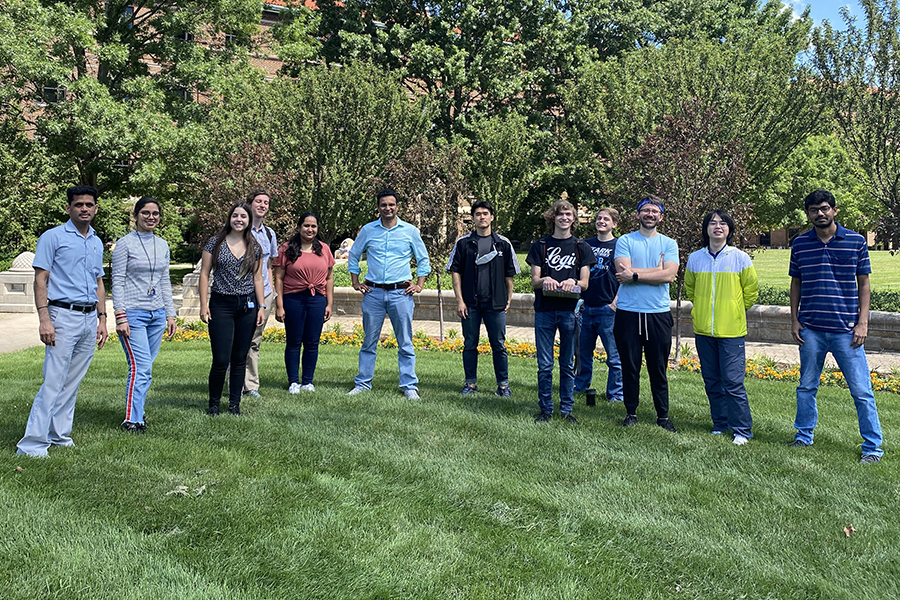ChE's ViPER group hopes to set new GUINNESS WORLD RECORDSTM title for the lowest temperature to charge a lithium-ion battery

The Vilas Pol Energy Research (ViPER) group will attempt a new GUINNESS WORLD RECORDS title at 2 p.m. on Dec. 21 in the Henson Atrium at Forney Hall.
Pol, a professor in the Davidson School of Chemical Engineering, and his research group will attempt to set a new record title for the lowest temperature to charge a lithium-ion battery. To succeed, the group will demonstrate charge and discharge abilities of a lithium-ion battery (LIB) at a temperature of -100°C. A Guinness World Records judge will be on Purdue University's campus to oversee the attempt.
During the demonstration, a lithium-ion battery will be charged and discharged in the ViPER’s ultralow temperature lab where all the required facilities are available. Once the judge is satisfied that the battery is operational, a Guinness World Records certificate will be presented to the group during a ceremony in the Forney Hall atrium. Register to attend in person or watch online.
The ViPER team is composed of undergraduate and graduate students and postdoctoral researchers, Pol said.
“Their role was to design an instrument with the ability to reach the extreme low temperature and develop the electrolyte that makes the battery operational without freezing the electrolyte at that ultralow temperature," Pol said.
The ViPER team has filed numerous inventions and published several articles on low-temperature lithium ion battery operations. In a research manuscript co-authored by Pol, the importance of “Lithium-ion battery (LIB) testing capable of simulating ultralow lunar temperatures” was outlined. Specifically, the article pinpointed problems with accurate and reliable testing of LIBs in extreme cold temperature environments analogous to the International Space Station and the lunar surface.
Currently, standard commercial refrigeration chambers are the primary method used to evaluate low-temperature LIB performance down to -75°C with ice build-up on the batteries, but no chamber is capable of exceeding -100°C, “which inhibits the ability to research, develop, and demonstrate potential battery technologies,” the authors wrote. ViPER’s innovative low-temperature system is capable of mimicking Mars and Moon surface temperatures as low as -175°C.
“For energy storage, lithium-ion batteries by far lead all battery chemistries in terms of energy and power density, charge retention, Coulombic efficiency, and cycle life,” the article explained. “However, many critical applications and systems avoid LIBs because of their safety risks during failure and poor low-temperature performance ...”
To combat these obstacles, the researchers devised and validated a state-of-the-art extreme low-temperature system (ELTS) using liquid nitrogen (LN2) to accurately control temperature and monitor electrical parameters at cold temperatures as low as -100°C with Argon flow, avoiding ice buildup because of surrounding moisture.
“The ability to simulate extremely cold-temperature environments found in the lunar and space missions, high-altitude air vehicles, and the polar regions of Earth and military expeditionary missions is now possible,” the authors wrote. The need of external heating to bring the LIB to room temperature for charging will be minimized.
This Guinness World Records title attempt won’t be Pol’s first. In August 2018, he set a new record title for the fastest time to arrange all elements of the modern periodic table.
This time around, he is happy to share the experience with his ViPER student researchers.
“Indeed, they are very excited to make something unique and wonderful and be a part of history," Pol said.
